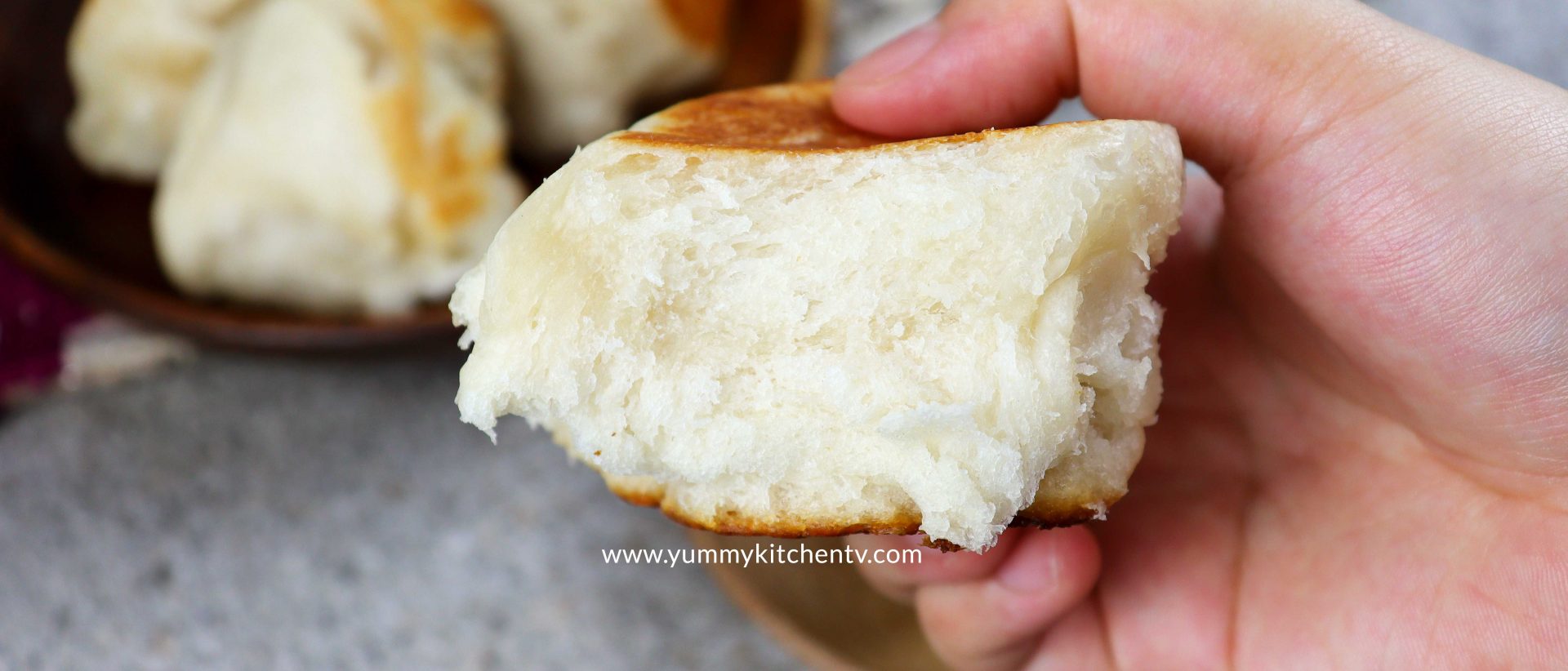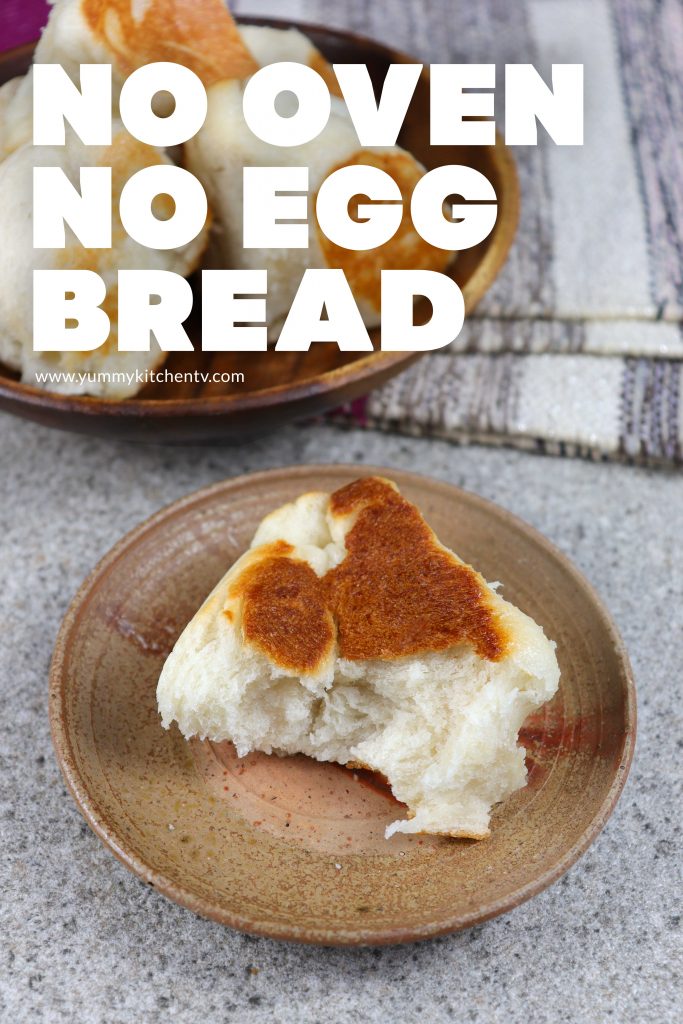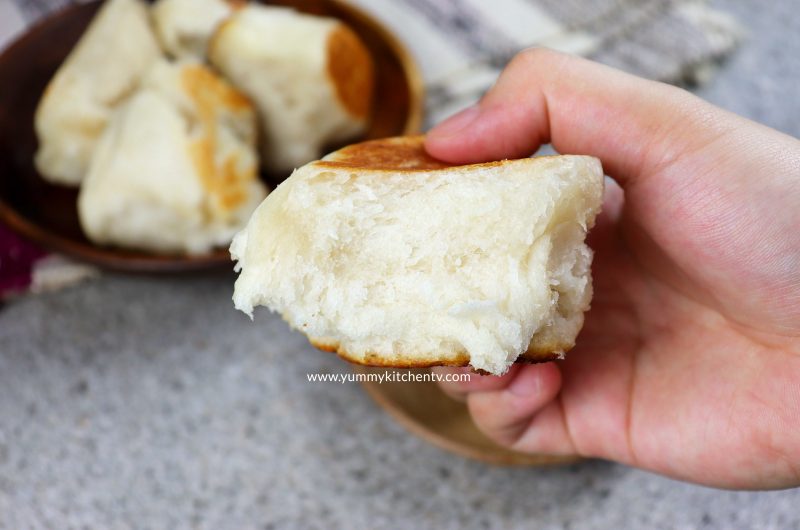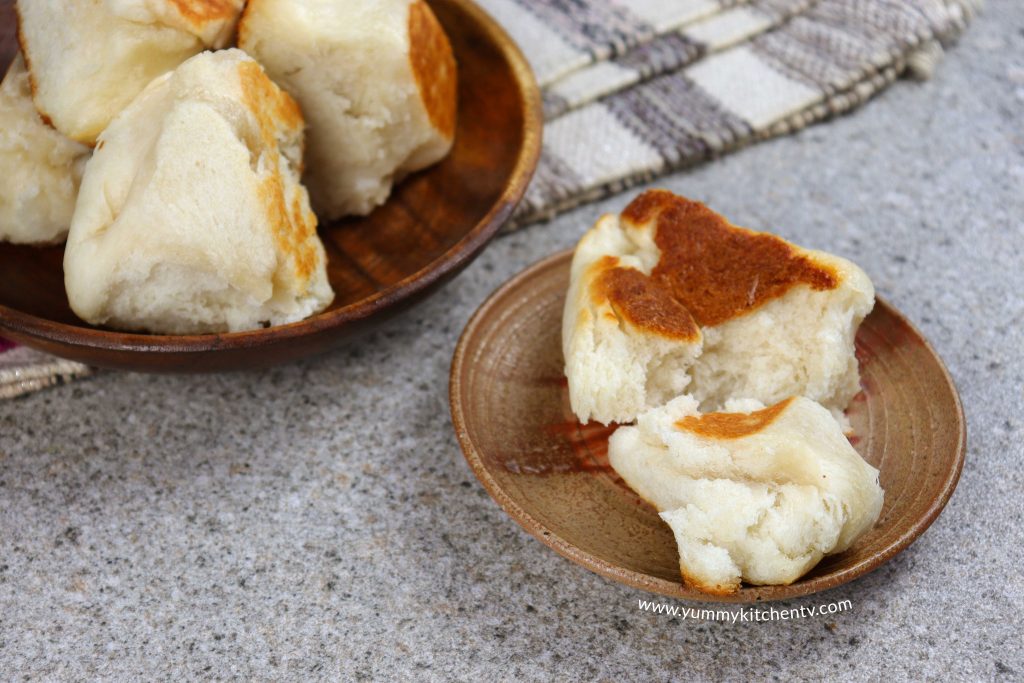No oven no egg bread is made by pan baking a no egg cake mixture made by all purpose flour, sugar, yeast, salt and oil. Try out this easy No oven no egg Bread recipe that’s so simple to do you might even buy a bigger pot to make a lot more batches. This no oven no egg bread recipe only needs 5 ingredients you can find at home, a pan, and stove and you’re ready to go!
How did baking start in the Philippines?
Before talking about the No oven no egg Bread, lets talk about the idea of baking started a thousand years ago, introduced by European traders, colonizers, and explorers. The art of baking started from Europe in the 17thcentury where cakes, pies and other pastries were beginning to be made. Which slowly crept to other countries through trade and culture.
While some may say baking or pastry making came from Europe, there are also history books that state that China who was also one of the early settlers in the Philippines in the early 618 AD was already making ‘moon cakes’, which were delicately made bread like skin with a yam or lotus paste baked desserts that used dry heat to make. Some say that Malays who introduced rice cakes as well as layered cakes to early Filipinos. Their knowledge of this process came from Dutch colonizers, which also used rice, coconut, and corn as ingredients, while using wooden steamers and clay pots as ‘ovens’ for cooking and baking. While some also state that Spanish missionaries who ate bread in their diet introduced the process and preparation of baking to locals.
The invention of the oven
The ancient oven started a millennia ago, in Croatia. Bakers of those days made bread using flat hot stones. Ancient Greece lead the practice of baking bread, in 600 BC the Roman Empire even saw bakers as a top profession. The oven, a tool that exposes the dish or dough into a hot environment and ‘cooks’ or ‘bakes’ the bread by generating constant heat in a desired temperature and time to make it into an edible dish. In the Philippines the oven started with the simple ‘palayok’ in tagalog which translates to ‘pot oven’. The baked goods were created over the palayok that was heated over charcoal. When electricity started to come through in the 1800’s and thus created more devices the oven was finally made and shared through the grapevine of countries wanting to learn and produce more of these baked goods. There were a variety of types of ovens powered by electricity, gas, conduction and convection, some ovens even has a roaster or self-cleaning versions. These all depended on the purpose of how it would be used and how it would suit the home environment.
Bread and why try this No oven no egg Bread?
Bread has now been embedded as part of the Filipino lifestyle. While this wont beat the rice as out staple dish, bread is still a snack or meal we look forward to in the afternoon, snack time, or meals that fills you up with it’s sweet or savory taste. In this recipe with just a mix of flour, sugar, yeast, water, salt, and oil, a bit of kneading, proofing, shaping, rising and baking over the stove top, you’ll be making fresh bread in no time.
But even if you don’t have an oven at home, this No oven no egg Bread is a great way to keep your panty stocked with soft fluffy bread goodness!
No oven no egg Bread
Course: Snacks5
piecesA fluffy easy to do no fuss sweet bread.
Ingredients
2 cups all purpose flour
3 tablespoons flour for kneading
1/3 cup white sugar
½ tablespoon yeast
½ teaspoon salt
2/3 cup water
2 tablespoons oil
Directions
- In a bowl, mix together all purpose flour, sugar, yeast, and salt. Add 1/3 cup water and mix with your hands, add 1/3 cup water again and mix till you get a shaggy dough.
- If the dough it too wet add flour one tablespoon at a time. And star kneading the dough in the bowl. Once the dough is less sticky add the oil. Knead till the dough has absorbed all the dough.
- Place this in an oil-greased bowl and cover for 1 hour and 30 minutes or till the dough has doubled in size. Once its ready roll this into a log and cut these into 5 equal pieces. Roll each of these into a ball tugging the sides towards the middle to get a smooth top. Set aside.
- Grease a pot with oil and add the dough, cover this with the pot’s top for 15 – 20 minutes. Cover any holes on the lid if there is one. Brush the top with water. Set aside.
- Prepare a pan at high heat for 5 minutes, place the pot on top of the pan and let this ‘bake’ for 15 minutes. Open and flip the bread, cover for another 5 to 7 minutes. Place the bread on a rack once cooked to cool to room temperature.
Recipe Video
Notes
- For a less sweeter bread, use 3 tablespoons sugar
- For the second rising, cover for longer if the dough still has not doubled in size.
No Oven No Egg Bread recipe (tagalog):
Sahog
- 2 tasa all purpose flour
- 3 kutsarang all purpose flour pang masa
- 1/3 tasa puting asukal
- ½ kutsarang lebadura
- ½ kutsaritang asin
- 2/3 tasa tubig
- 2 kutsarang mantika
Paano lutuin
- Sa isang mangkok haluin ang harina, asukal, lebadura, at asin. Dagdagan ng 1/3 tasa ng tubig at haluin ng mabuti gamit ang mga kamay, dagdagan muli ng 1/3 tasa ng tubig at haluin hanggang makabuo ng mabuhaghag na masa.
- Pag masyadong mabasa ang masa, lagyan ng 1 kutsarang harina at imasahe hangang hindi na ito masyadong madikit. Ilagay ang mantika at imasa hangang masipsip ng masa ang mantika.
- Ilugar ito sa malaking mangkok na grinasa ng mantika, takpan ng 1 oras at 30 na minute o dumoble ng laki. Pag handa na irolyo ito at hatiin ng 5 piraso. Irolyo at magporma ng bilog, hilain ang mga gilid paloob para makagawa ng makinis na itaas. Itabi.
- Ipahid ng mantika ang isang palayok at ilagay ang mga masa dito, takpan ng takip na walang butas o pagmay butas takpan ang butas. Takpan ang palayok ng 15 – 20 na minuto. Itabi.
- Maghanda ng kawali na may malakas na init ng 5 minuto. Ilugar ang palayok sa itaas nito at lutuin ng 15 na minuto. Buksan ang palayok at ibaliktad ang mga masa sa loob. Takpan muli ng 5 o 7 na minuto. Ilugar ang mga luto ng pandesal sa rack para lumamig.






